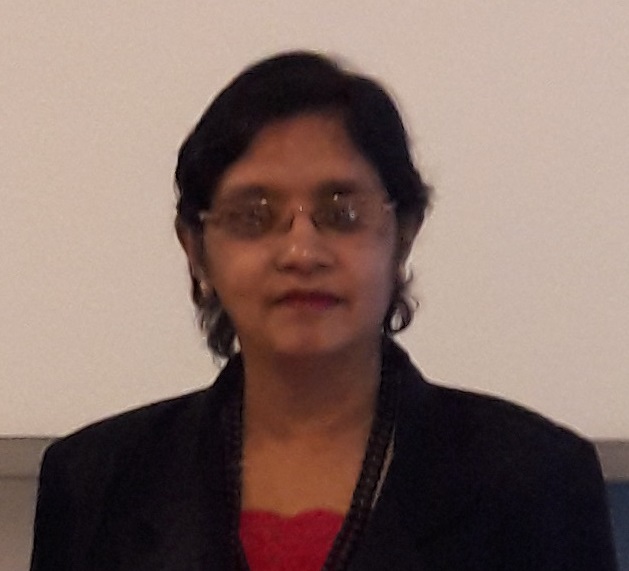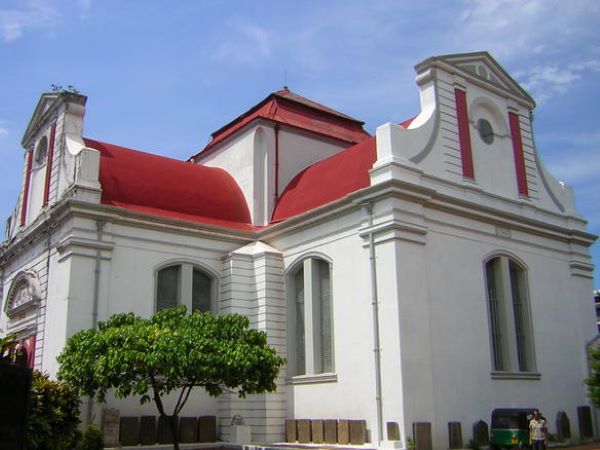Wolvendaal Church – significant Dutch Era building in Colombo City
By Arundathie Abeysinghe
 Constructed in Doric Style (classical Greek or Roman order of Architecture), in the form of a *Greek cross with approximately 1.5 meter thick walls built with clay ironstone, Wolvendaal Church (Wolvendaalse Kerk) is located in *Pettah, Colombo. The Church has seating capacity for approximately 1000 people. At present, the Church is known as the Christian Dutch Reformed Church.
Constructed in Doric Style (classical Greek or Roman order of Architecture), in the form of a *Greek cross with approximately 1.5 meter thick walls built with clay ironstone, Wolvendaal Church (Wolvendaalse Kerk) is located in *Pettah, Colombo. The Church has seating capacity for approximately 1000 people. At present, the Church is known as the Christian Dutch Reformed Church.
During the period the Church was built, the area beyond the Colombo City had been a wilderness and there had been *jackals roaming in the area. The Dutch had mistaken the jackals for wolves and the area had been known as Wolf’s Dale (meaning dale of wolves) and named the area as ‘Wolvendaal’ (dale of wolves in Dutch).
Dating back to the Dutch Colonial Era, Wolvendaal Church is the most significant Dutch Building and one of the oldest Protestant Churches still in use in Sri Lanka. At present, Sunday Services are held in the Church.
The foundations of the Church were laid in 1749 and the Church building was completed in 1757 and dedicated for public worship by Reverend Matthias Wirmelskircher, the Rector of Colombo Seminary. During the dedication ceremony, there had been two governors as distinguished guests, Joan Gideon Loten and his successor Jan Schreuder, Members of the Council, Reverend Minister as well as prominent Burghers and their families.
The high roof in the middle of the Church building is similar to a dome and had been originally arched with brick and roofed with roof tiles and surmounted with a brazen lion, a cross on the lion’s head, a sword in one hand and seven arrows in the other (which represented the seven united provinces of the Dutch Republic). According to legends, in 1856, a bolt of lightning had destroyed the lion as well as damaged the dome. Later, the roof had been replaced with an iron covering.
There are many mural tablets on the walls of the Church and many more such tablets are built into the external walls.
Dutch Furniture in the Church date back to the Dutch Colonial Era and they are in existence to date, although minor repairs were done in 2017. There are exquisite ebony chairs in the pew of the Church. The wooden pulpit, the lectern as s well as the *baptismal font are symbols of excellent craftsmanship. The pulpit of the Church is typical of a Dutch Reformed Church as the Minister stands higher than the congregation on an opulently ornamented wooden structure. The wooden pulpit is also a symbol of excellent craftsmanship.

The floor of the Church is paved with granite flagstones with engraved tombstones of Dutch Governors and colonists who governed *Ceylon during the Dutch Colonial Era including the last Dutch Governor Johan Gerard van Angelbeek who passed away in Colombo in 1799, during the British Colonial Era.
Wolvendaal Church is the sole Dutch Church in Sri Lanka that has been continuously in use from the Dutch Era to date. From 2018, services in the Church are held in English, Sinhalese and Tamil. Groote Kerk in Galle is a similar Dutch Reformed Church building.
Location: Pettah, Colombo
- Baptismal font – A basin or vase in which water is stored for the Christian ritual of baptism, usually, placed at the entrance of a church.
- Ceylon – Sri Lanka gained Independence from British Colonials in 1948. In 1972, Ceylon became a republic within the Commonwealth and Ceylon was thereafter known as Sri Lanka.
- Greek cross – Also known as crux immissa quadrata, this type of cross has arms of equal length barely longer than the width.
- Jackal – Sri Lankan jackal (Canis aureus naria) is a subspecies of golden jackal (Canis aureus) native to Southern India and Sri Lanka.
- Pettah – Located east of Fort in Colombo City, Pettah is known as a hectic outdoor street market by many people. There are a large number of wholesale and retail shops, buildings as well as commercial institutions in Pettah. According to many, the main market segment of Pettah is similar to a gigantic crossword puzzle as the entire market cannot be covered even if a person walks from dawn to dusk. Situated in the busiest commercial area in Sri Lanka, there are many bazaars and markets in Pettah where diverse items from fabrics, clothing, household goods such as pots and pans including plastic flowers, shoes, vegetables and fruits are sold in the busy streets. Pettah is derived from the Tamil word ‘Pettai’, an Anglo-Indian word which signifies a suburb outside a fort. Pitakotuwa, Sinhala name for Pettah too means outside the fort (Colombo Fort is known as kotuwa in Sinhala).







